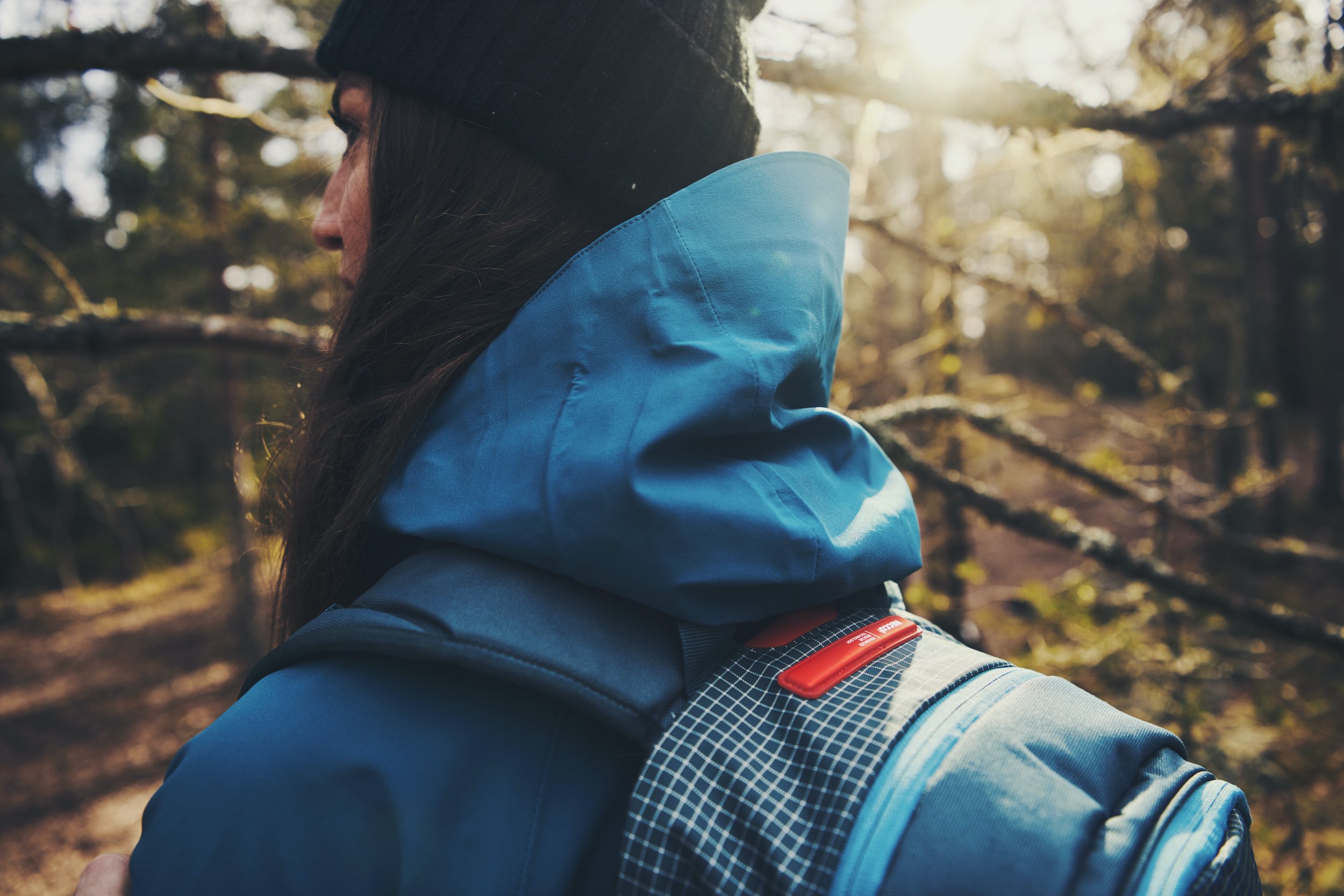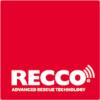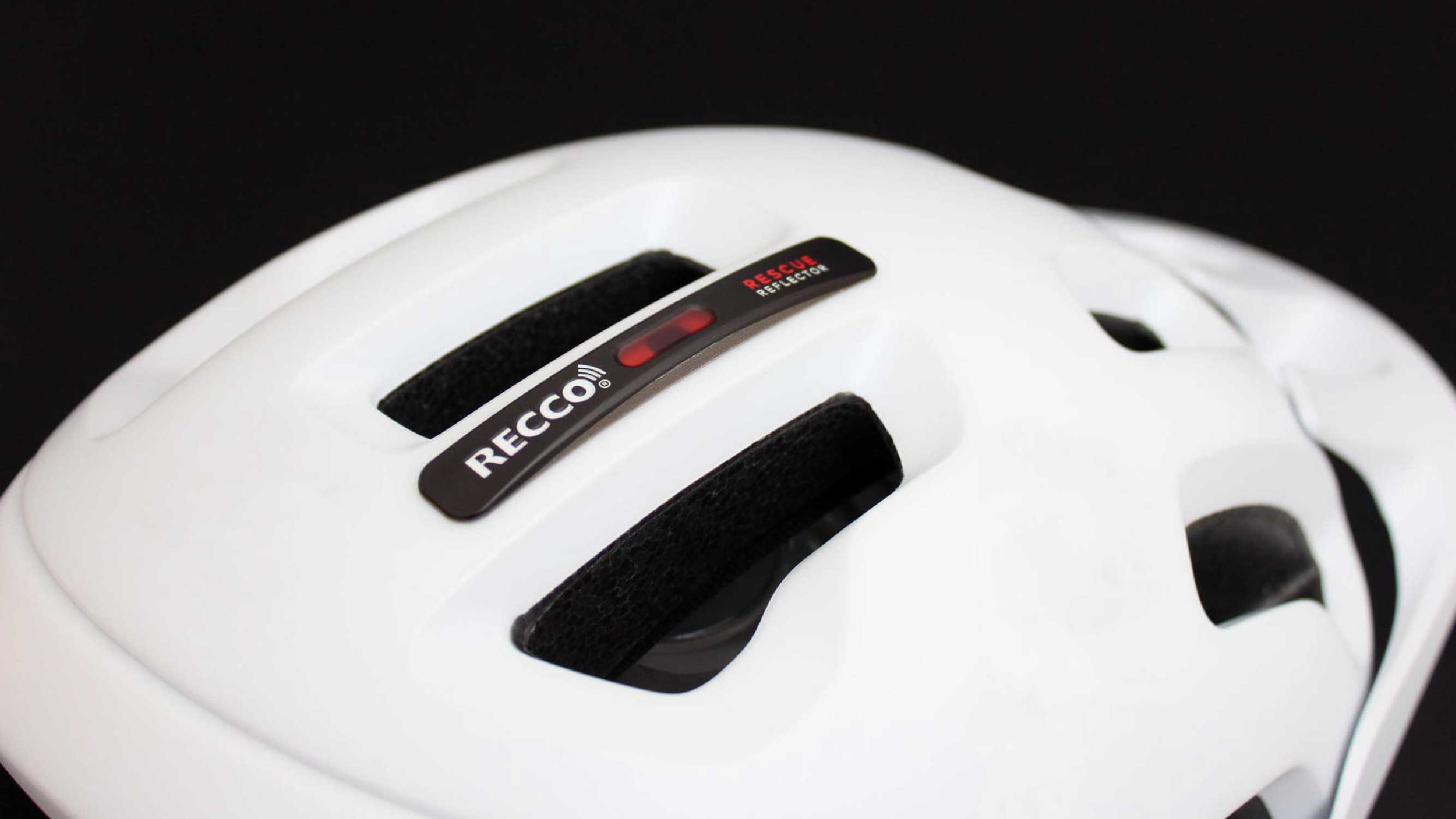Coincidently here is a new article on RECCO reflectors, published only 10 days ago.
The RECCO reflectors are lightweight passive transponders that require no power or “activation” to function. They consist of a diode and an antenna. The reflector can be integrated into jackets, pants, helmets, backpacks, back protectors, boots, transceivers, watches and harnesses. Reflectors are also available as an individual product that can be attached to helmets, backpacks or as a belt. They are designed to last a long time if not mechanically damaged.
The reflector is embedded into many products, but can also be purchased separately. RECCO/Courtesy image
RECCO reflectors are embedded into apparel and gear from hundreds of popular brands such as Patagonia, Helly Hanson, POC and Arc’Teryx.
People who have a reflector on them can be detected using RECCO. The technology is impressive.
The handheld detector can find reflectors within a range of up to 80 meters in the air and 20 meters through packed snow, which results in a practical range of 30 meters in avalanche debris.
The RECCO detector emits a directional radar signal similar to the beam of a
flashlight. When the radar signal hits the RECCO reflector, it is echoed back to the detector and points the user in the direction of the victim. Reflectors can also be used to search for lost gear.
There are two RECCO detectors in Grand County. One is held by Grand County Search and Rescue and the other is with the Winter Park Ski Patrol.
Daniel Howlett, who goes by Howie, works for RECCO as a director of training and technical support. He describes his role as “answering questions nonstop, all the time.”
Before working for RECCO, Howie used to work at Alta Ski Area in Utah, for 40 years as a part of the avalanche program. He also worked in backcountry rescue. During this work, he familiarized himself with RECCO technology. In the late 1990s he was exposed to a new and smaller RECCO unit. During his time working in the outdoors, Howie has seen technology rapidly evolve.
“We watched the technology go from analog avalanche transceivers to what they are now, triple antennas with digital readouts,” Howie said.
Howie eventually resigned from the resort and began to work for RECCO full-time in Montana. He described the relationship between RECCO and integrated brands as a “partnership.”
“They are partners in the rescue system,” Howie said. “Yeah sure, your customers and you have to put these reflectors in and you have to train with the system, but everyone’s doing it all together.”
Search and rescue
Grand County Search and Rescue has had their receiver for the last 10 years.
Janel Jordy has been with Grand County Search and Rescue for around seven years. It started when she saw a flyer in the post office and saw a chance to give back to the community while also combining her love for the backcountry.
In her years of volunteering with search and rescue, she has also seen technology change rapidly. She calls the technology they use “impressive.” Besides the RECCO detector, Grand County Search and Rescue has a whole kit of technology available.
She’s seen drones being deployed firsthand in different missions and used for a variety of purposes. The drones can be used to study difficult terrain before sending volunteers onto the ground and capture photos in hard to access terrain. Some even have limited infrared capabilities to find victims who need rescuing.
GPS technology is also incredibly important in different missions, according to Jordy. SARTopo is a mapping program that provides data on things like the location of team members, terrain conditions, sunlight amounts, snowpack and more.
The RECCO detector can be used when someone doesn’t have a transceiver or if the transceiver fails, according to Jordy. Many people have a reflector embedded in their clothing or equipment and might not even be aware. In the case of inbound avalanches, RECCO detectors can be used to find someone who might not be carrying the same equipment that a backcountry athlete might.
Jordy also emphasized the importance of maintaining and carrying a transceiver if you decide to recreate in the backcountry whether its skiing, snowshoeing, snowmobiling or anything else.
“With avalanches, time is of the essence,” Jordy said. “So when you’re out skiing, you’re in transmit mode and then if something terrible happens, you switch over to search and then hopefully find that very transceiver pretty quickly.”
Jordy said that in the case of an avalanche in the backcountry, there is no replacement for a partner, transciever, shovel and probe combination.
RECCO in Grand County
Alex Scholtz Bash works year-round for Winter Park Resort as a professional ski patroller and
bike partoller. She also works as an avalanche tech for the Winter Park Ski Patrol
Dog Team.
Bash has been working with Winter Park Ski Patrol for 11 years. Prior to moving to the Fraser Valley, she lived in Durango working at Fort Lewis College in the outdoors program. During this time she learned a lot about snow safety and avalanches while working in the San Juan Mountains.
Bash’s love for skiing, learning and the outdoors have kept her in the business for a long time. Working in ski patrol, she says that the experience she gets is unparalleled. Bash is very familiar with technology and the role it plays in the outdoors.
Ski patrollers have many jobs around the resort. Everyday for a ski patroller is different, however, most mornings are spent doing maintenance around the mountain and preparing for guests, according to Jordy. Throughout the day they assist guests, whether they need questions answered or when an injury occurs. At the end of the day, patrollers clean up the slopes and make sure that nobody is left on the mountain.
Mt. Baker Pro patrol heading out for an early morning of avalanche control.RECCO/Courtesy photo
In early 2023, Bash used a RECCO detector to find a buried
avalanche victim after Grand County Search and Rescue and the sheriff’s office requested assistance from the Winter Park Ski Patrol Dog Team. Two snowmobilers were caught in an avalanche in January near
Pumphouse Lake.


 recco.com
recco.com





